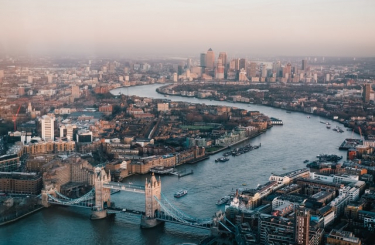Related


In May 2022 the new four-year electoral cycle for London began, with the 32 boroughs re-electing all local councillors.
In trying to win those seats, political parties of all stripes (mainstream, residents, independents, and others) produced their manifestos of pledges and commitments to voters.
We reviewed every published manifesto of the winning parties. This amounted to 30 out of the 32 boroughs.
As we know, London is a large and sprawling conurbation that is short on space and high in need of homes. Every manifesto referred to a commitment to housing and homes – showing that this is high on the political agenda of the successful parties. This is not surprising given the sheer number of people this affects, spanning different socio-economic groups, ages, and encompassing social tenants, private renters, and first-time buyers.
Within larger-scale investments come many opportunities for funders to support activities that can strengthen communities and sense of place
As with most topics reviewed, some had more to say than others on how they would help alleviate London’s housing crisis, like how many properties would be built to overcome it and over what time frame.
With large-scale infrastructure projects, it may not immediately seem apparent to funders where opportunities to fund will come from. Within larger-scale investments come many opportunities for funders to support activities that can strengthen communities and sense of place. This is as true for the new places which are to be built as well as existing ones. Community centres are hubs for a myriad of offers for the local community such as classes, lunches, general get-togethers, and community-led initiatives.
The next most referenced themes across the manifestos are young people and safety/crime (both 29 out of 30) as well as community and health & social care (28). These are intrinsically linked to place, and it is reassuring to see that they are referenced to such an extent that appears to show the correlation.
It is likely that there will be more requested of the voluntary, charity and social enterprise (VCSE) sector, certainly over the next local electoral cycle
It is likely that there will be more requested of the voluntary, charity, and social enterprise (VCSE) sector, certainly over the next local electoral cycle. There is a link to community and health & social care as we move toward the new Integrated Care Systems (ICSs) that became statutory organisations with their own boards on 1 July 2022. They will involve a more joined-up approach between local authorities and healthcare systems and, at the local level, more community groups with a health and wellbeing focus. Most manifestos are clear on the importance of involving community in the decisions that affect them. Co-design is a distinguishing feature of this.
London is now made up of five ICSs which are: NHS North Central London, NHS North East London, NHS North West London, NHS South East London, NHS South West London
Independent community groups, sometimes known as Thriving Communities are becoming more established and seeking their own funding streams, in an effort to become less reliant on the structures and parameters that statutory funding often stipulates.
There were fewer references in the manifestos to the creative, digital, and artistic sectors overall. Where reference was made, it was in boroughs that already have established plans for these areas with external partners. For example, in Enfield, Netflix has built a new film and production site resulting in the borough proposing Film Academy that will train 1000 people per year.
It is important to make the link to funding arts and culture to the health and wellbeing of the communities. Art classes for all those who feel socially isolated are shown to have lasting and positive benefits to health and wellbeing. This recent piece on Creative Health and Wellbeing from Arts Council England shows the joined-up approach referred to above and how it can transform, inspire and help communities.
We also need to be cognisant of not leaving people behind in an ever more digital world. Out of the 30 manifestos, only half had any mention of digital skills. And this is not a euphemism saying people over a certain age aren’t able to use digital tech, many are. But socioeconomic factors are to be taken into account along with access to high-speed internet as well as access for the homeless population.
VCSEs will be looking for funding as local authorities look to do more with less, having to consider where they can cut their own costs
It is the VCSE sector that will be the first to see on the ground the detrimental effects of the increases in the cost of living for many Londoners. Indeed, they are already seeing it. Cost of living is featured highly in 23 manifestos. VCSEs will be looking for funding as local authorities look to do more with less, having to consider where they can cut their own costs. VCSEs have learned much from the pandemic and have proven that they can respond at pace in areas they already know well. They will continue to need support through funding to support Londoners hit hardest by the crisis.
We have put together a more detailed slide-pack of the findings from our manifesto mapping, which you can look at here.

